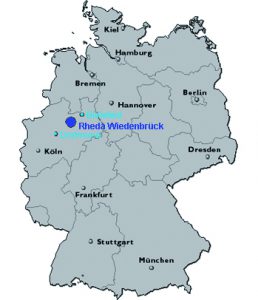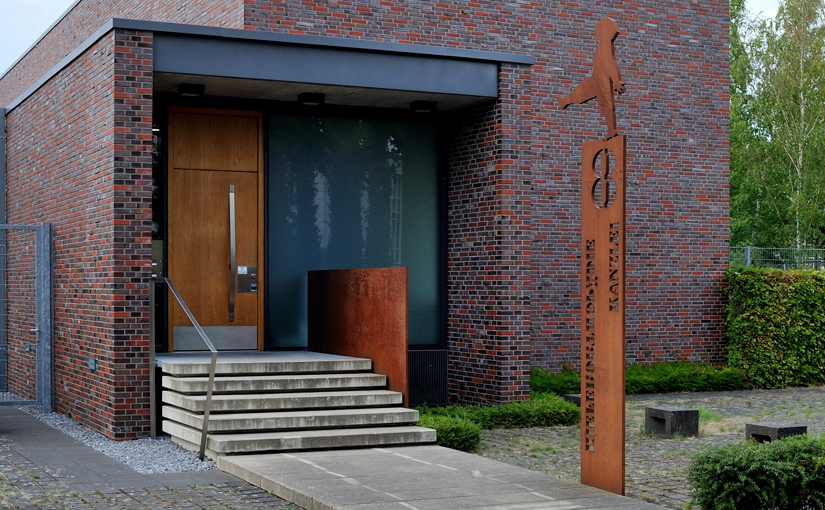
Since 1999, the office has been situated in Rheda-Wiedenbrück, a town with around 49,000 inhabitants and good transport connections to the A2 motorway and to the East-West railway which runs from Cologne to Berlin, via Dortmund and Hannover. The airport of Paderborn/Lippstadt is 50 km away from Rheda-Wiedenbrück and the airports of Dortmund and Münster/Osnabrück are 70 km away respectively.
Within 60 km of Rheda-Wiedenbrück, the High Courts of Bielefeld, Detmold, Paderborn and Münster can be found, as well as the Appeal Court in Hamm which has the largest court circuit in Germany and an authoritative jurisdiction.
The region of East Westphalia-Lippe is a classic example of an industrial region with a traditional character. It has always succeeded in regenerating itself without the need for State intervention, thanks to its medium-sized companies. Besides its industrial diversity, the region is also attractive to tourists as a recreation area and as “the sanctuary of Germany” due to its unusually high number of well-known spas and health resorts, as well as the famous, traditional, welfare institutions. Not so long ago, based on the above, the region succeeded in distinguishing itself, not just from the State of North Rhine Westphalia, but from the whole of Germany because of its above average rate of development. This is further demonstrated by the municipal trade tax revenue as well as the proportion of workers employed by the local commercial economy, whereby East Westphalia-Lippe is clearly one of Germany’s forerunners in this context. The number of workers subject to mandatory social security contributions has risen from 500,000 in 1984 to 680,000 in the year 2016. In September 2018, the unemployment rate was 3.7%, practically a state of full employment.
Nevertheless, despite the initially favourable starting conditions of post-war Germany, the region has not been left unharmed by trade crises. The significance of the traditional industries in this region – textiles and clothing, cigars, furniture – has been greatly reduced. The manufacturers of the past have become marketing firms who design brands and sell them. These products are manufactured abroad, in either their own factories or, in another’s factory. Other well known textile companies include JAB Anstoetz and Seidensticker in Bielefeld as well as Brax in Herford. Around one third of the German furniture industry is still based in the region, including the firms Schieder & Welle in Paderborn and Interlübke and COR in Rheda-Wiedenbrück, as well as Poggenpohl in Herford and Nobilia in Gütersloh. The roll of employment stability has steadily been taken over by construction of machines and electronics. This growth has occurred as well as a result of the development of the public service sector and of commerce.
The diversity of small and medium sized businesses is still important today for the vitality of the East Westphalia-Lippe region, so much so that, without this diversity of businesses known throughout Germany and abroad, the economy would be incomplete. Amongst those businesses, we can include Bertelsmann, one of the biggest employers in the region and Miele, one of the leading washing machine manufacturers, both in Gütersloh. The agricultural machinery manufacturer, Claas, in Harsewinkel, is another firm also well known abroad. Other well known firms include the food manufacturers Kuchenmeister GmbH Günter Trockels of Soest and Oetker of Bielefeld, and the paper filter manufacturer Melitta in Minden. ble 4 Accent
